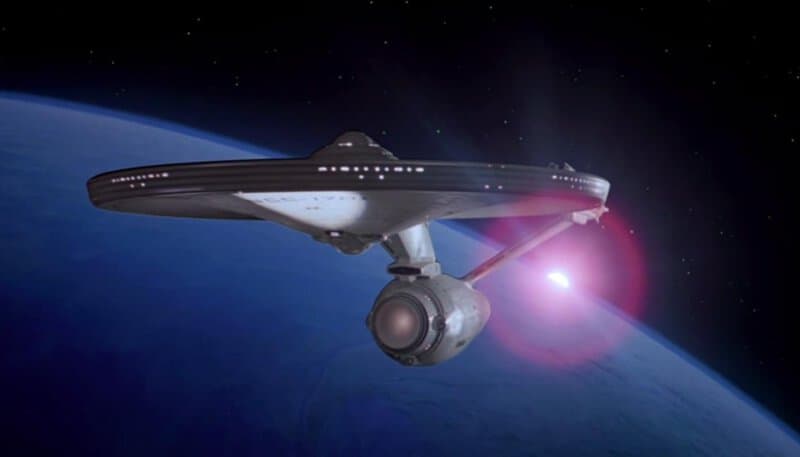Douglas Trumbull Discusses the Preservation of the Epic Theatrical Experience
We spoke with the effects legend behind ‘2001: A Space Odyssey’ and ‘Star Trek: The Motion Picture,’ and his insight is crucial.

In regards to immersive and experiential filmmaking, how do you feel today’s fantasy and science fiction films are doing? We don’t often allow time to sit with an optical effect.
That’s a long story, but I’ll tell you my kind of overview of what I think about it.
Yes, for sure.
We made 2001 a big 70mm Cinerama spectacle that was designed for these 90- and 100-foot wide, deeply curved screens in special theaters. That’s what our intention was, and that’s how we knew that movie would be shown. I was a young kid and I thought, “Well, this is terrific.” I really enjoyed working with Kubrick. He taught me a lot about making films. It’s really delightful that we can create this kind of immersive experience that people stop talking, and you stop all the normal melodramatic issues of character development, dialogue, tension, suspense, animosity, violence. They’re all eliminated totally in exchange for this epic experience with experiential visuals and music. So, that really stuck with me. Then after 2001, I realized that the next step in cinema was multiplexes, which was instead of these giant, epic 70mm houses and 70mm movies, we’ve got 35mm movies in little square boxes. The palate of being able to make and deliver an immersive experience was pretty much eliminated from the industry across the board.
I have never really thought about the multiplex effect.
Well, most people don’t think about it at all. It’s gotten worse more recently because we’re in the age of streaming and Netflix and Amazon, which are just cranking out what’s basically the equivalent of television storytelling, which is fine, I’m not being derogatory about it. I see some shows that are really quite strikingly excellent with great writing, great performances, and well-photographed and well-directed shows, but they’re not epic and they wouldn’t stand up on a 90-foot wide screen. If you have that wide screen and you have that epic experience, you can think about how you direct a movie differently.
The directors who used to know how to do that are pretty much gone from the scene, except for a couple of holdouts like Christopher Nolan and Quentin Tarantino. These guys remember the good old days of 70mm, what we call roadshow movies. Where a really good movie could play in one theater for two years uninterrupted. They loved and admired those days and would want them back, but they’re not coming back. Those theaters are gone, and there are very few 70mm projectors still running in the world, and there’s only one film laboratory left, and Eastman Kodak is bankrupt. The arena of making movies is totally changed from what it was in the ’60s and ’70s when those epics were big.
Tarantino made The Hateful Eight in Ultra Panavision, which is even wider, and lo and behold, there were no screens to show it on, and very few projectors to run it on. And Nolan did Dunkirk. That was an epic war movie with incredibly big wide shots of plane fights and dog fights and the ocean and the sky, and he was really looking to create that kind of immersiveness using a lot of IMAX cameras with 70mm film throughout the film. I really admired that. But in order to deliver that to a broad range of audiences around the world, we’ve got to improve the exhibition business a lot from what it has been recently.
Sure, so we encourage folks to go see Star Trek: The Motion Picture on the big screen and keep an eye for whenever 2001 hits your local repertory theater. The films are radically different in the theater versus your television screen at home.
Yeah, absolutely. Or on your smartphone.
(Laughter) Sure, yeah, on your smartphone.
I talk about this a lot because I’m a frustrated film director. I like making these moments in films. I like directing the films, but the palette as I say, has been really disrupted and diminished by bean counters and cost-savings and low-budget projectors, and stuff that’s not even as good as a good 35mm Technicolor in 1940.
So how do we fight this?
Well, I’m trying to fight it. I’ve been working on it for years, and I’m developing a new way of making movies, which is with high frame rates and high dynamic range to try and get that back. Ang Lee has adopted this, and so when you see Gemini Man, which is coming out October 11th, there’ll be quite a few theaters that are equipped to show it at the high frame rate and high dynamic range, with new digital projectors and laser projectors. I think it’s going to be mind-boggling, and it’s going to hopefully focus people’s attention on the potential of what movies could be, to be different from streaming movies or 35mm movies for conventional movie theaters. I think we can bring the epic spectacle back, and it’s on its way now with Gemini Man, which is quite an amazing film.
It’s definitely on my to-watch list, and I’ve got a theater not too far from me that’s planning on screening it at high frame rate.
Make sure they’re using dual laser projectors. It’s what they call Dolby cinema, and there may be some IMAX theaters that’ll be able to do it. I’m not sure if they have the right servers, but they’re trying to find as many premium large-format theaters as possible to show this thing with high frame rate and 3D and laser projection.
Star Trek: The Motion Picture returns to theaters on September 15th and 18th.